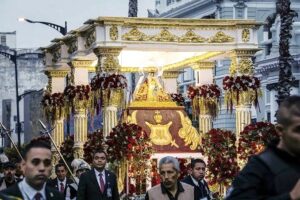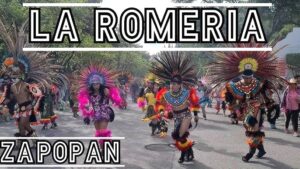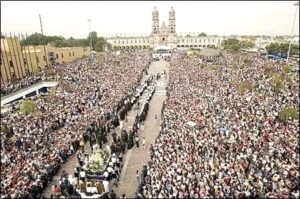Adventures in a more secular Mexico

Bob Patience reports on the history of Mexico that has been steeped in the Catholic Church, but that is changing!
I was a member of NOSHA when I lived in New Orleans and I have followed NOSHA since I moved to Mexico, seven years ago. I’m particularly interested in the program about aging (September 2023).
I was 75 years old when I bought a one-way ticket to Mexico. I didn’t know anybody in Mexico and I didn’t speak Spanish. I packed a box and sent it ahead, and I brought a suitcase and a bilingual dictionary with me and headed to the airport. (I had researched this move before making it.) I am 83 years old now and love living in Mexico.
It looks like Mexico is about to get its first woman president and the leading candidate is Jewish. The Mexican Supreme Court recently ruled that abortion is legal in Mexico. Same sex marriage is legal all over Mexico. The country is no longer in the iron grip of the Catholic Church!
The history of the Catholic Church in Mexico dates from the period of the Spanish conquest of the Aztec Empire (1519–1521).
In many parts of the country, Catholic Christianity is heavily syncretized with folk customs; and Aztec, Mayan, and other pre-Columban religions. Where I live, in the city of Guadalajara, the pagan Aztec influence on Catholic religious practice is colorful and incongruous.
 You can see a vivid example of this if you come in October for the Romeria. The Annual Pilgrimage (Romería) of Our Lady of Zapopan is so impressive that in 2018 it was even inscribed in UNESCO’s List of the Intangible Cultural Heritage of Humanity.
You can see a vivid example of this if you come in October for the Romeria. The Annual Pilgrimage (Romería) of Our Lady of Zapopan is so impressive that in 2018 it was even inscribed in UNESCO’s List of the Intangible Cultural Heritage of Humanity.
The celebration dates back to 1734. Every year on October 12, more than two million pilgrims carry the image of the Virgin of Zapopan on a journey of five miles, from the Metropolitan Cathedral in Guadalajara to the Basilica in the neighborhood of Zapopan. (I should tell you that Guadalajara is a very big city with a current population of 5,400,000 people.)
The journey is the biggest religious celebration in the city. It begins with the traditional music of mariachis, which originated in this Mexican state and is also on UNESCO’s Representative List of the Intangible Cultural Heritage of Humanity. Over 30,000 native Aztec dancers prepare special presentations for “the carrying,” and people open their doors and windows to watch and join the celebration.
Not long ago I was invited into the home of one of the dancers. He showed me his costume which was hand made with beads and other ornamentation. He spends thousands of pesos on these costumes. In the living room, there was a giant poster of Catholic iconography that dominated the room. A statue of the Virgin Mary was on a table next to an Aztec headdress. I’ll include some pictures of the Romeria. The experience is somewhat disorienting. Very loud drums are being played on every corner with the whirling dancers leaping and twirling in the air. It’s crowded and chaotic.
 The Catholic Church dominated Mexico both legally and culturally until The Mexican Revolution was won by largely anticlerical Constitutionalists and the Church’s role in Mexico was restricted constitutionally. The constitution declares that Mexico is a secular state and provides for the right to religious freedom. In 2023, the country was scored 4 out of 4 for religious freedom. The Supreme Court has ruled that abortion is legal. Same-sex marriage is legal all over the country.
The Catholic Church dominated Mexico both legally and culturally until The Mexican Revolution was won by largely anticlerical Constitutionalists and the Church’s role in Mexico was restricted constitutionally. The constitution declares that Mexico is a secular state and provides for the right to religious freedom. In 2023, the country was scored 4 out of 4 for religious freedom. The Supreme Court has ruled that abortion is legal. Same-sex marriage is legal all over the country.
About 78% of Mexicans are Catholic. The church is more important in the conservative, rural parts of the country. It is much less so where I live in a progressive, modern city.
